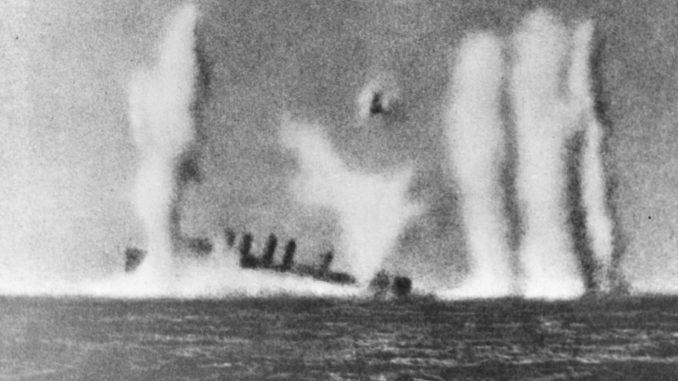
What has become known as the Japanese ‘Centrifugal Offensive’ had delivered the Empire’s troops to the shores of Java, which was the ultimate objective of the entire strategy. Major facilities in the Philippines and at Singapore had been captured or neutralised, leaving the Dutch and a handful of surviving British and American units to face the final assaults on Java itself. With the seaplane tender Langley having been sunk, and with the landings on Java imminent, the Japanese bomber units resumed their air offensive against the island. Surabaya was attacked again on the 28th of February – the port suffered more damage and the escorting Tainan Zeros claimed to have shot down a Dutch Buffalo.
In a desperate attempt to turn back the Japanese invasion fleet, which was now just a few miles off the northern coast of Java near the beaches of Kragan, the ancient Vildebeests of 36 Squadron were called into action. Six of the biplanes, accompanied by the sole airworthy Albacore in the Far East, arrived at Madioen to refuel and bomb-up for the attack. Setting out to sea, this motley collection soon discovered the invasion transports and went in to attack, claiming hits on several ships but receiving damaging fire which left holes in many of the planes. They then returned to Madioen, where they were quickly serviced and sent out again, this time to attack the landing craft now heading for the beach. Two were shot down before arriving, but the remainder carried out attacks on the transports as they disembarked troops. Results were difficult to ascertain, but 36 Squadron was credited with sinking nine enemy ships for the loss of three Vildebeests – Japanese records list just three ships damaged. This effort, combined with bombing raids by American B-17s, was not enough to prevent the landings – the Japanese now had a foothold on Java itself.
Reinforcements were now useless – the freighters Sea Witch and Kota Baroe arrived at the port of Tjilitjap but there was no time or crew available to assemble the 27 P-40s and 6 DB-7s (Douglas A-20s) carried in their holds. These brand-new aircraft sat awaiting assembly and assignment to American and Dutch pilots, but were eventually dumped in Tjilatjap harbour to prevent them being captured by the Japanese. An air of defeat was very much in the air, as the Dutch began to destroy harbour facilities as well – demolitions began at the port of Tanjong Priok. All non-essential aircraft that were still serviceable and could make the trip were ordered to withdraw to Ceylon or Australia, and most of the remaining Do 24 and PBY flying boats were among those to flee.
A Desperate Defence
In Western Java the second Japanese landing force was spotted just a few miles off the coast. ABDA air command assembled every flyable bomber in the area, which amounted to just two Hudsons, six Blenheims and eleven 139WHs, for an attack. These tired aircraft made several attacks on the convoy during the night of the 28th of February/1st of March, claiming hits on several ships. Each aircraft was quickly refuelled, re-armed, and sent out repeatedly during the night, which left the crews thoroughly exhausted by the time dawn came. A Hudson and a Blenheim were lost to crash-landings having suffered damage during the attacks. When dawn came, Dutch Buffalos and RAF Hurricanes strafed the landing craft. Despite this effort, the landings at Bantam Bay were also a success.
At dawn on the 1st of March, the 17th Provisional Pursuit set out to strafe the landings at Kragan in their worn-out fighters. Facing the combined air defences of dozens of escorting warships and anti-aircraft batteries that had been set up ashore, the squadron lost three P-40s shot down and the other six damaged, to the point that they were useless. The Dutch also threw their remaining aircraft against the Japanese invasion force, losing 2 CW-22s shot down. Whilst the damage to the P-40s was being assessed at Ngoro, two Tainan Ku discovered and strafed the secret airfield and caused yet more damage. Now lacking any useful aircraft with which to fly in the defence of Java, the 17th Provisional Squadron was disbanded – the unit had only been in existence for 50 days. The surviving pilots were ordered to make their way to the airfield at Djokjakarta to await a place on one of the B-17s and LB-30 bombers that were ferrying refugees to Australia.
The landings at Bantam Bay in northwestern Java were proceeding apace, and the advancing troops were beginning to overrun ADBA airfields – Kalidjati was caught by surprise when a Japanese regiment appeared nearby, and several of the British bombers based there had not been withdrawn had to be burned to prevent them falling into Japanese hands. Several Hudsons did manage to take off under fire and escape.
Having lost their protective force of fighters and facing continual bombing raids against its airfields, V Bomber Command in charge of the small American bombing force was in an untenable position. Its commander, Colonel Eugene Eubank, requested and received permission to withdraw his force back to Australia due to the fact that most of the airfields available to him were about to be demolished to prevent their use by the Japanese, and the main base at Malang was subject to constant attacks. 18 B-17s were considered fit to make the flight to Broome in Western Australia, which was acting as the main conduit to Australia following the attack on Darwin in February. Each bomber carried as many passengers as possible, with the last leaving in early hours of 2nd March. PatWing 10, having lost all its PBYs in the Netherlands East Indies, also evacuated its last J2F Duck utility aircraft. The ground crews were ordered to head to Tjilitjap and embark on various transport ships that would attempt to escape Java.
A Perilous Escape Route
Escaping by sea was fraught with danger as Japanese naval forces were swarming over the entire area. On the 1st of March, the British cruiser HMS Exeter, escorted by USS Pope and HMS Encounter, was attempting to escape to Ceylon via the Sunda Strait after suffering heavy damage during the Battle of the Java Sea. This small flotilla was discovered by a floatplane from a force led by the cruisers Haguro, Nachi, Ashigara and Myoko, and although the plane was quickly shot down the fate of the ships was sealed. Ashigara and Myoko soon closed the range and opened fire, and both Exeter and Encounter were soon sunk. Pope briefly managed to escape destruction, but was being chased by the entire Japanese force. More cruiser floatplanes were launched and these dive-bombed and strafed the plucky ship, which was also under fire from the pursuing cruisers. The destroyer was also located by twelve Nakajima B5Ns from the nearby carrier Ryujo. Pope, a veteran of the Battle of Balikpapan in January, was soon damaged by a near miss that severely damaged one of her shafts and caused flooding. The Japanese cruiser force soon closed the range and delivered the coup de grace.
Far to the south, another group of ships was suffering a similar fate. After rescuing the survivors of the Langley, the destroyers Whipple and Edsall had met the oiler Pecos near Christmas Island on the 28th of February. Efforts were underway to transfer the survivors to the oiler when the group was spotted by a formation of bombers that were raiding the island. The next day, the ships scattered before the inevitable return of the Japanese, but this effort was in vain. Pecos was soon located by scout aircraft from the Kido Butai, Japan’s carrier fleet, and then attacked shortly afterwards by Soryu-based aircraft led by LtCdr Takeshige Egusa. On the third attack, the oiler was badly hit and began to sink. Several D3A dive bombers remained in the area to strafe survivors in water, which proved dangerous when fire was returned from a .50cal gun position on the still floating oiler, and one of the bombers was shot down. The survivors were picked up by the Whipple.
After breaking off from the Whipple and Pecos, the Edsall was last seen heading for Tjilatjap with some of the surviving P-40 pilots from the Langley. She never arrived, and her fate remained a mystery until several years after the war. Two hours after the Pecos had been sunk, Edsall was also sighted and attacked by D3As from the Kido Butai, and then caught be cruisers Tone and Chikuma and sunk. Several of the crew and some of the USAAF men from Langley were rescued, but their bodies were later discovered in a mass grave at Kendari on Celebes after the war. Also in the grave were men from the Dutch freighter Modjokerto, which was sunk by the same cruisers on 1st March.
Back on Java, only pitifully remnants of the ABDA air force survived. The Japanese meanwhile were moving up IJAAF bomber sentai to captured airfields in western Java. On the 2nd of March, 242 Squadron Hurricanes set out to strafe Kalidjati where they claimed to have burned several newly arrived Ki-48s, but lost one fighter to ground fire in return. 59th Sentai Ki-43s attacked Andir airfield in response, where they were intercepted by four Dutch CW-21s, one of which shot down.
Even the lifeline to the south was not safe. On the 3rd March Broome was reconnoitred by several Japanese aircraft, which revealed he large numbers of Allied aircraft passing through the town – nine Dutch, two RAF, and two PatWing10 PBYs, plus two civilian Empires were moored on the water and several B-17s and LB-30s were on the nearby airfield. Nine 3rd Kokutai Zeros arrived and immediately attacked the aircraft, some of which were taking off loaded with passengers. An SOC from the sunken cruiser Houston was shot down, as was an LB-30 over the sea with 32 passengers aboard – only two escaped from the wreckage and managed to swim to shore. Every flying boat was destroyed on the water, but one Zero was shot down by a gunner from a Dutch PBY. On the return flight a KNILM DC-3, having left Java, was sighted and shot down.
The Last Days of the Defence of Java
By now large Japanese forces were being moved onto Java, with units of the 3rd Flying Division now based in western Java. The Dutch realised that Batavia could not be defended and declared it an open city.
Taking stock of the situation on Java, efforts were made to consolidate the RAF Hurricane force at Andir on the 4th. Only 12 fighters were still available, but some barely serviceable having seen extensive action without proper maintenance. 10 of the Hurricanes made an attack on Kalidjati and optimistically claimed seven Zeros destroyed, but most of the RAF fighters were damaged in return. By this time the RAF on Java consisted of only 7 Hurricanes, 2 Hudsons and a few Vildebeests that still airworthy. The situation of the Dutch was not much better, with their flying boats now all pulling out for Australia, loaded with evacuees. On the 5th Andir was bombed and yet more aircraft destroyed, including a pair of Dutch 139WHs.
The following day the Kido Butai, having completed a sweep for Allied shipping south of Java, moved north to launch an attack on Tjilitjap with 180 aircraft. These claimed to have sunk a total of 19 ships and ruined the port facilities, closing Tjilatjap as an ABDA base. Land-based bombers also pounded the port the next day, adding to the damage, before the Japanese army occupied the ruins the following day, with the wrecks of many Allied ships littering the harbour.
This was almost the end for the Allied air forces. On the 7th with Andir under severe air attack, the tiny RAF force pulled back to small field at Tasikmalaja. This was immediately discovered and attacked by Army bombers, which destroyed a Hurricane and 3 Vildebeests. Realising the game was up, the Dutch began to destroy their remaining aircraft to prevent them falling into enemy hands. All the MLD’s aircraft that lacked the range to reach Australia were destroyed, and last civilian flights made it out of Java – a Lockheed Loadstar was the last aircraft to escape Java for Australia.
On the 8th, as the Dutch began to discuss the surrender of Java, the last two airworthy Vildebeests attempted to flee to Sumatra, hoping to find an evacuation ship operating in one of the small ports still under Dutch control that could take the crews to India. Nothing was sighted, and both had to ditch due to fuel starvation. The crewmen that didn’t survive the ditching were all captured. After one last reconnaissance patrol, the last two Hurricanes were burned, and the RAF ground contingent prepared to surrender. A few enterprising RAF pilots patched up a ‘demolished’ Lodestar airliner, loaded it with additional fuel cans, and flew it via two landing strips on Sumatra all the way to Ceylon, successfully making the very last flight out of Java.
On the 8th Dutch Army surrendered. A ceasefire followed before, the formal surrender was signed on the 12th of March. Java now in Japanese hands. They had achieved their goal of capturing the oil-rich Indies in just three months, a spectacular accomplishment. The Allies were forced to withdraw to Australia and Burma, to await the next Japanese moves.


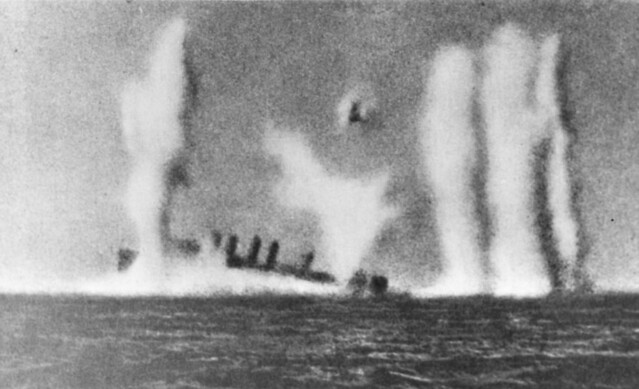
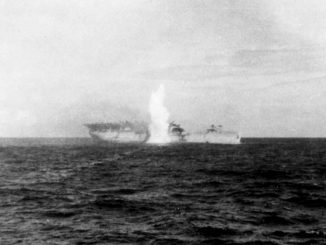
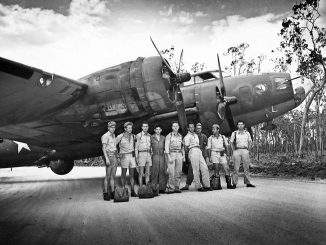
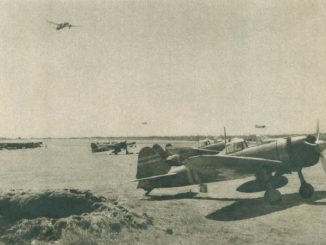
Leave a Reply